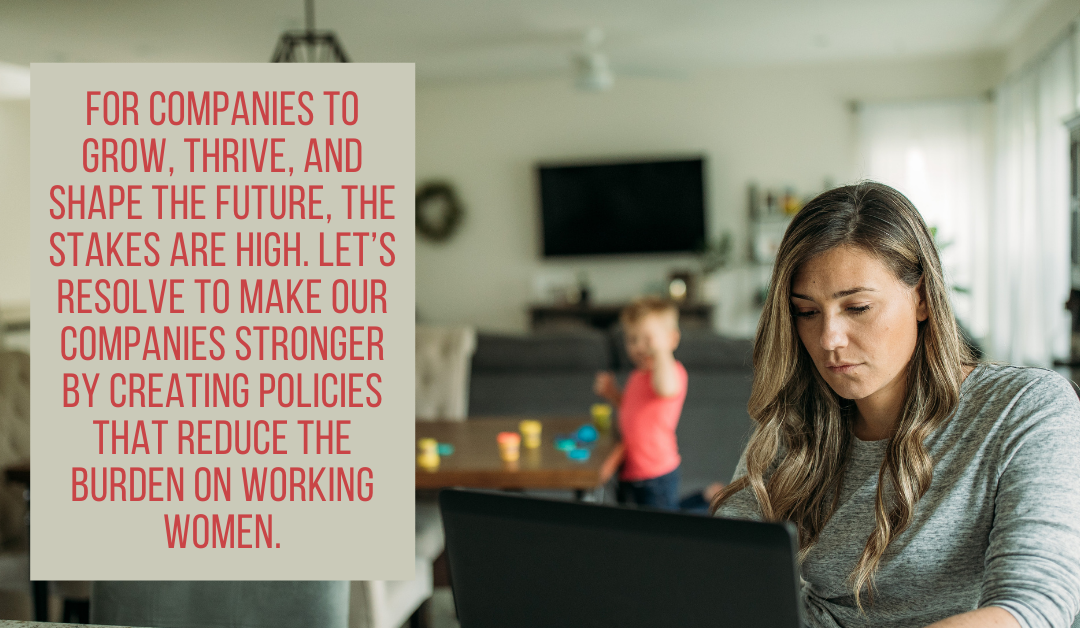The analysis on the pandemic’s impact on working women continues to weigh on my mind. This crisis is disproportionately impacting working women, and business leaders who wish to grow and thrive in the future simply must say “No, that’s not going to fly.” As a business leader, I read the analyses with a burning fire in my belly, but more importantly, with resolve. It’s time to recognize that now’s the time for everyone running companies, from early-stage startups to the biggest corporations, to refuse to be complicit in setting women back generations. It is a business imperative—and a moral one—to provide the support women and working moms need now more than ever. Report after report shows that working mothers are carrying the weight of the burden.
First, some facts about the disproportional job losses. “Mothers of children 12 years old and younger lost nearly 2.2 million jobs between February and August, a 12% drop, a Stateline analysis found,” compared to fathers of small children who saw a 4% drop. The story is even worse for single mothers of young children who lost 16% of jobs they held in February. And women-owned businesses are taking an inordinate hit in the pandemic. “In a Hawaii state survey, women business owners were twice as likely to say their businesses will not survive the pandemic. Only 5% of female business owners said they were unaffected by the pandemic, compared with almost 23% of male business owners.”
As schools open and online or hybrid learning puts pressure on women to help their children with schoolwork, working mothers who’ve retained their jobs through the pandemic face a different hardship. A July study by Washington University in St. Louis found that mothers of young children have lost four to five times more work hours than fathers in the pandemic.
To make matters worse, more than 50% of working parents are without childcare. Full-time working mothers in two-parent households average 22 hours of childcare per week during the current climate while maintaining their jobs.
What I find particularly worrisome is we’re generally leaving parents on their own to figure it out. One in five working parents said either they or their partner are considering leaving the workforce to care for their children. What we’re seeing, particularly as we turn to the fall and six months into the “non-normal”, is that a lot of companies don’t want to cut parents any further slack. And I think a lot of women are going to be re-evaluating whether they’d be better off maybe taking a period out of the labor force. In fact, I know that’s true as I’ve had private conversations with working mothers about that very choice. We’re going to see what happens as women choose to take time out, as they scale back their hours, as they get sidelined in their jobs. All of those things will mean those women are in a worse position — from experiencing delays in career advancement to negative impacts on earning potential — in four and five years’ time than they would have been without the pandemic.
We have an opportunity to avoid some of that damage. Women’s rights advocates are calling for state and federal policies to help women weather the storm by mandating more flexible school and work schedules, requiring more paid leave for family care and establishing more protection against job discrimination because child care tends to fall to women. Frankly, I’m not convinced policy is the answer, but rather that this is just good sense and business leaders can and should do this without the government mandating that we must. If you don’t buy that argument, I also contend that policy change takes too long. We need to be in front of this now with employers leading the way. How do we do that?
One, we need dads to step up and do more work at home. If the amount of work has gotten bigger now that the kids are home, we need to balance the chores. That way, employers will recognize that they have to cut parents slack if it’s not just the female parents, but all parents who need a bit more slack. [Sorry, gentlemen. I know many of you already are doing this—thank you, but I need to say it anyway because it’s not universally true].
Second, the smartest and easiest solution for companies looking to provide relief and maximize performance is to shift to flexible hours, giving scheduling autonomy to your employees. Yes, your employees can handle it, will be more productive, and will be more loyal due to having autonomy and trust. Get more organized about the way meetings are handled and decisions are made. Streamline key decisions to meetings where all stakeholders are present and develop internal communications procedures that keep everyone in the loop.
Third, eliminating pay gaps within your company will make your business more competitive and improve retention. You’re not only competing with other firms for talent; in this economy and in the minds of your employees, you’re competing against the cost of childcare and the salary of your employee’s partner. I don’t want to see a lot of women taking off ramps, but the reality is they’re going to take off ramps because of the pandemic. I want us to build the on-ramps so we can get them back to work and back on track quickly.
The pandemic has brought us to a critical crossroads—one that will determine the fate of working mothers, as well as whether the companies we’re building today are resilient, strong, and positioned to succeed. For companies to grow, thrive, and shape the future, the stakes are high. Let’s take this opportunity to support women-owned businesses and resolve to make our own companies stronger by creating policies that reduce the burden on working women.

